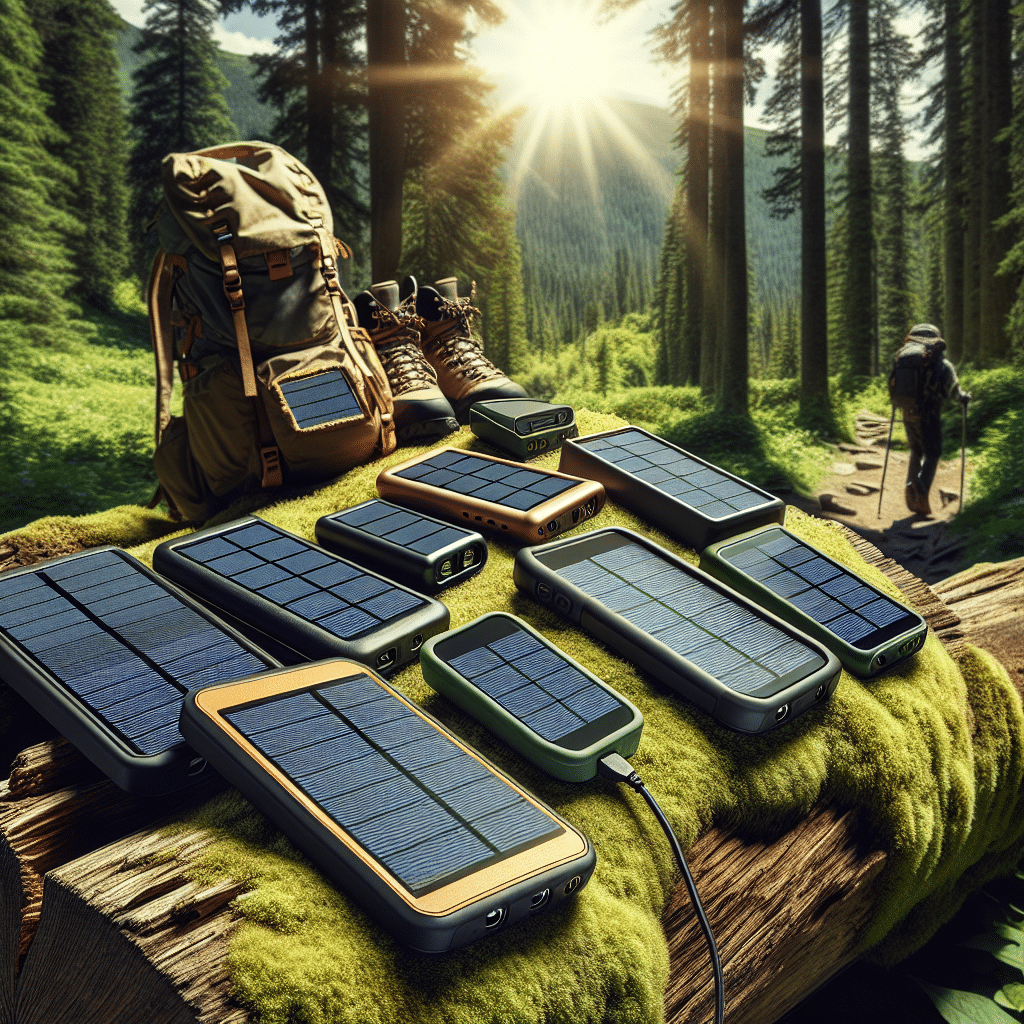Understanding Outdoor Solar Power Banks
Outdoor solar power banks have become essential for hikers and outdoor adventurers who need to keep their devices charged on the go. These portable energy sources harness sunlight to recharge, making them an eco-friendly and practical solution for remote areas. They vary in capacity, size, and solar efficiency, catering to diverse hiking needs.
Key Features to Consider
-
Solar Charging Efficiency
- The rate at which a solar power bank can convert sunlight into energy is critical. Look for products with high-efficiency solar panels (20-25% efficiency is optimal) to ensure quicker charging rates, even on cloudy days.
-
Battery Capacity
- Measured in milliamp-hours (mAh), capacity determines how much energy a power bank stores. A capacity of 10,000 mAh can charge a smartphone approximately two to three times, while larger models (20,000-30,000 mAh) can power multiple devices or larger gadgets like tablets.
-
Durability and Weather Resistance
- Hikers need power banks that can withstand rugged terrains. Look for units that are waterproof, dustproof, and shock-resistant. These features significantly enhance longevity and performance in the field.
-
Port Type and Output
- Ensure the power bank has multiple output ports to charge several devices simultaneously. USB-A and USB-C ports are standard; the latter is increasingly popular due to faster charging capabilities. Aim for a total output of 2.1A or higher for optimal charging speeds.
-
Portability
- Weight and size matter for hikers who carry their gear. A lightweight, compact power bank with a rugged design is preferable, ideally one that can be easily attached to backpacks or belts for convenience.
-
Additional Features
- Look for added functionalities such as built-in LED flashlights, compass features, or emergency alarms. These can enhance overall usability in outdoor situations.
Top Picks for Outdoor Solar Power Banks
1. Anker PowerPort Solar Lite
- Capacity: 10,000 mAh
- Solar Efficiency: 21-24%
- Durability: Weather-resistant
- Ports: Dual USB-A
- Weight: 10.6 oz
- Ideal for lightweight backpackers, this model features a highly efficient solar panel and compact design, making it perfect for short hikes where reducing weight is crucial.
2. RAVPower Solar Charger 25000mAh
- Capacity: 25,000 mAh
- Solar Efficiency: 21-23%
- Durability: IPX7 waterproof
- Ports: 3 USB outputs
- Weight: 16.6 oz
- Perfect for longer treks, this robust power bank offers significant storage capacity to charge multiple devices several times over. Its rugged design ensures reliable performance in harsh weather.
3. Nekteck Solar Power Bank
- Capacity: 20,000 mAh
- Solar Efficiency: 22%
- Durability: Shock and water-resistant
- Ports: Dual USB outputs
- Weight: 12.3 oz
- This versatile power bank combines substantial capacity with high efficiency. Reflective of great value for the price, it features safety mechanisms against overcurrent and short-circuiting.
4. BigBlue 28W Solar Charger
- Capacity: No built-in battery
- Solar Efficiency: 22-25%
- Durability: Water-resistant and durable
- Ports: 3 USB outputs
- Weight: 1.2 lbs
- A little different from others on this list, the BigBlue is a solar panel charger that directly charges devices with innovative technology and fast charging. It’s perfect for day hikes where weight matters but you have access to sunlight.
5. Fsolar 60,000 mAh Solar Power Bank
- Capacity: 60,000 mAh
- Solar Efficiency: 20%
- Durability: Shockproof and waterproof design
- Ports: 4 USB Outputs
- Weight: 37 oz
- Tailored for multiple devices and long durations, this charger is bulkier but offers superior capacity for extensive trips or for power-hungry gadgets.
Maintenance Tips for Solar Power Banks
- Regularly Clean Solar Panels: Keep panels free from dust, dirt, or debris, which can inhibit charging efficiency. A soft cloth or mild soap can help maintain performance.
- Protect From Extreme Conditions: While many units are waterproof and durable, try to avoid exposing them to extreme temperatures to maximize battery life.
- Store Properly: If not in use, store your solar bank in a cool, dry place, away from direct sunlight, to prevent draining and maintain battery health.
Conclusion of Features to Consider
Choosing the right outdoor solar power bank can greatly enhance your hiking experience. Evaluate your power needs, the duration of your hikes, and specific features to find the best match for your outdoor pursuits. With the right power bank, you can stay connected, navigate safely, and capture stunning moments without fearing your devices might run out of battery.
